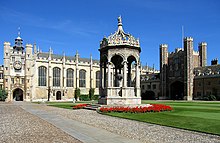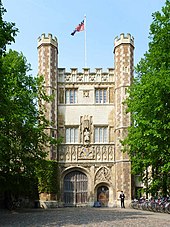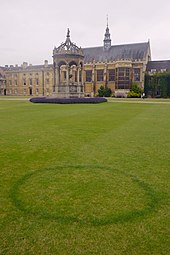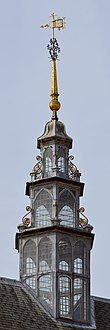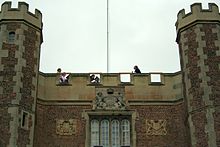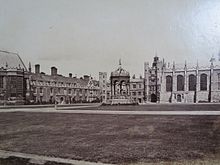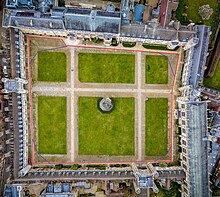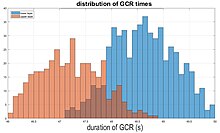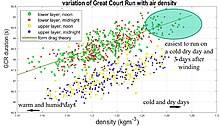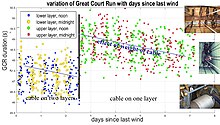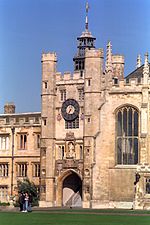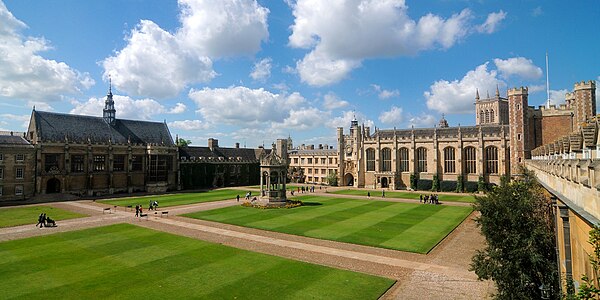
Trinity College is a constituent college of the University of Cambridge. Founded in 1546 by King Henry VIII, Trinity is the largest Oxbridge college measured by the number of undergraduates and has the largest financial endowment of any college at either Cambridge or Oxford.

St John's College is a constituent college of the University of Cambridge founded by the Tudor matriarch Lady Margaret Beaufort. In constitutional terms, the college is a charitable corporation established by a charter dated 9 April 1511. The full, formal name of the college is the College of St John the Evangelist in the University of Cambridge. The aims of the college, as specified by its statutes, are the promotion of education, religion, learning and research. It is one of the larger Oxbridge colleges in terms of student numbers. For 2022, St John's was ranked 6th of 29 colleges in the Tompkins Table with over 35 per cent of its students earning first-class honours. It is the second wealthiest college in Oxford and Cambridge, after neighbouring Trinity, at Cambridge.
The Westminster Quarters, from its use at the Palace of Westminster, is a melody used by a set of four quarter bells to mark each quarter-hour. It is also known as the Westminster Chimes, Cambridge Quarters or Cambridge Chimes from its place of origin, the Church of St Mary the Great, Cambridge.

Sheffield Town Hall is a municipal building on Pinstone Street in the City of Sheffield, England. The building is used by Sheffield City Council, and also contains a publicly displayed collection of silverware. It is a Grade I listed building.
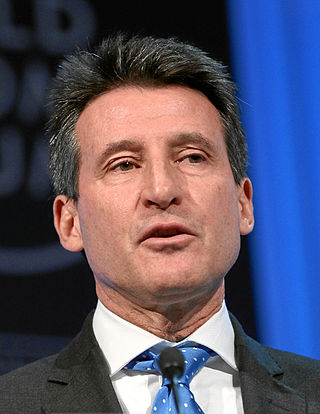
Sebastian Newbold Coe, Baron Coe,, often referred to as Seb Coe, is a British politician and former track and field athlete. As a middle-distance runner, Coe won four Olympic medals, including 1500 metres gold medals at the Olympic Games in 1980 and 1984. He set nine outdoor and three indoor world records in middle-distance track events – including, in 1979, setting three world records in the space of 41 days – and the world record he set in the 800 metres in 1981 remained unbroken until 1997. Coe's rivalries with fellow Britons Steve Ovett and Steve Cram dominated middle-distance racing for much of the 1980s.

The Wren Library is the library of Trinity College in Cambridge. It was designed by Christopher Wren in 1676 and completed in 1695.

King's Hall was once one of the constituent colleges of Cambridge, founded in 1317, the second after Peterhouse. King's Hall was established by King Edward II to provide chancery clerks for his administration, and was very rich compared to Michaelhouse, which occupied the southern area of what is now Trinity Great Court.

Nevile's Court is a court in Trinity College, Cambridge, England, created by a bequest by the college's master, Thomas Nevile.

Thomas Nevile was an English clergyman and academic who was Dean of Peterborough (1591–1597) and Dean of Canterbury (1597–1615), Master of Magdalene College, Cambridge (1582–1593), and Master of Trinity College, Cambridge (1593–1615).

David George Brownlow Cecil, 6th Marquess of Exeter, KCMG KStJ, styled Lord Burghley before 1956 and also known as David Burghley, was an English athlete, sports official, peer, and Conservative Party politician. He won the gold medal in the 400 m hurdles at the 1928 Summer Olympics.
A repeater is a complication in a mechanical watch or clock that chimes the hours and often minutes at the press of a button. There are many types of repeater, from the simple repeater which merely strikes the number of hours, to the minute repeater which chimes the time down to the minute, using separate tones for hours, quarter hours, and minutes. They originated before widespread artificial illumination, to allow the time to be determined in the dark, and were also used by the visually impaired. Now they are mostly valued as expensive novelties by watch and clock enthusiasts. Repeaters should not be confused with striking clocks or watches, which do not strike on demand, but merely at regular intervals.

A striking clock is a clock that sounds the hours audibly on a bell, gong, or other audible device. In 12-hour striking, used most commonly in striking clocks today, the clock strikes once at 1:00 am, twice at 2:00 am, continuing in this way up to twelve times at 12:00 mid-day, then starts again, striking once at 1:00pm, twice at 2:00 pm, up to twelve times at 12:00 midnight.

Nottingham Council House is the city hall of Nottingham, England. The 200 feet (61 m) high dome that rises above the city is the centrepiece of the skyline and presides over the Old Market Square which is also referred to as the "City Centre". It is a Grade II* listed building.

The Salisbury Cathedral clock is a large iron-framed tower clock without a dial, in Salisbury Cathedral, England. Thought to date from about 1386, it is a well-preserved example of the earliest type of mechanical clock, called verge and foliot clocks, and is said to be the oldest working clock in the world, although similar claims are made for other clocks. Previously in a bell-tower which was demolished in 1790, the clock was restored to working condition in 1956 and is on display in the North nave aisle of the cathedral, close to the West front.

Big Ben is the nickname for the Great Bell of the Great Clock of Westminster, at the north end of the Palace of Westminster in London, England, and the name is frequently extended to refer also to the clock and the clock tower. The official name of the tower in which Big Ben is located was originally the Clock Tower, but it was renamed Elizabeth Tower in 2012 to mark the Diamond Jubilee of Elizabeth II.

A turret clock or tower clock is a clock designed to be mounted high in the wall of a building, usually in a clock tower, in public buildings such as churches, university buildings, and town halls. As a public amenity to enable the community to tell the time, it has a large face visible from far away, and often a striking mechanism which rings bells upon the hours.

Trinity Episcopal Church is an historic church located in north-central Pennsylvania, at 844 West Fourth Street, Williamsport, Pennsylvania. Built in 1875 and consecrated in February 1876, it is the largest of the Episcopal churches in the city. Preservation Williamsport includes the church on its first trolley tour stop.
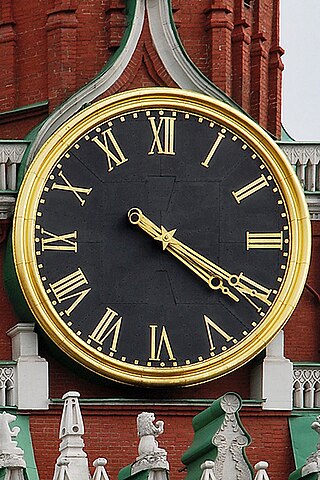
The Kremlin Clock or Kremlin Chimes, also known colloquially in the West as Moscow Clock Tower, is a historic clock on the Spasskaya Tower of Moscow Kremlin. The clock dial is above the main gates to Red Square. For decades, the chimes have rung on the quarter-hour, with bells tolling for each full hour.
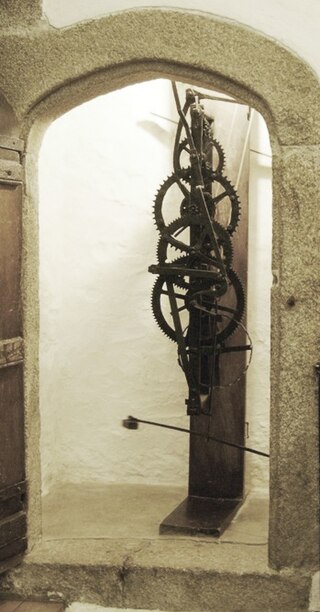
The Cotehele clock is situated at Cotehele House, Calstock, Cornwall. It is the earliest turret clock in the United Kingdom still working in an unaltered state and in its original position. It was probably installed between 1493 and 1521.
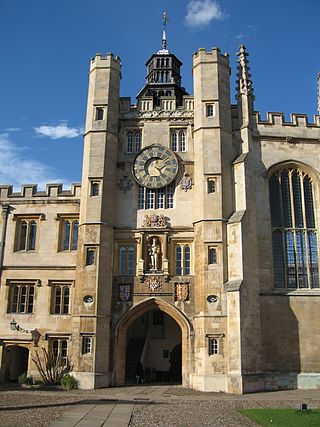
The Trinity College Clock is an historic clock in Trinity College, Cambridge.
